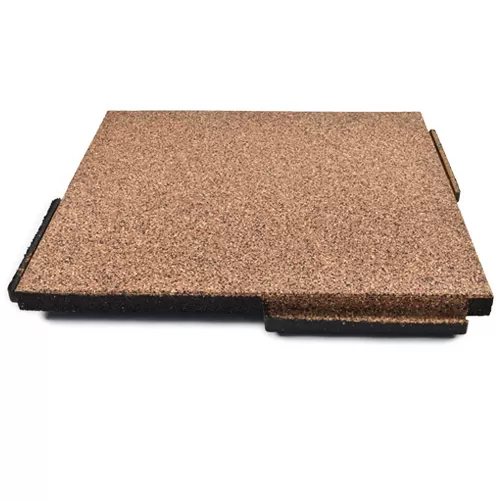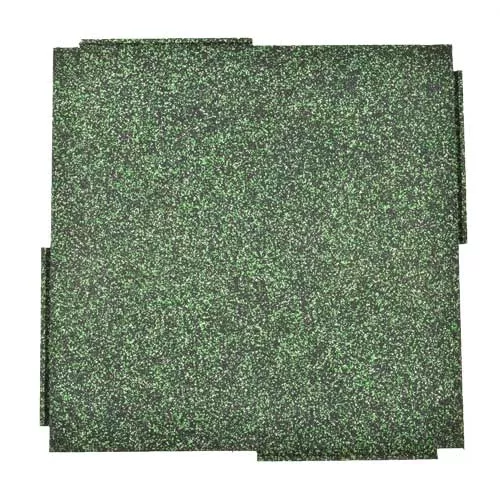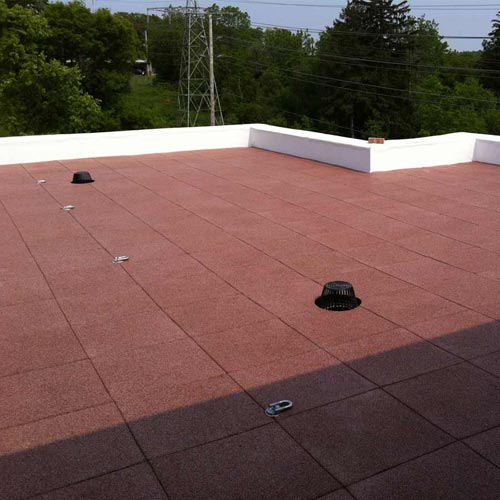What Is TPV Rubber?
Related Product: Sterling Roof Top Tile 35% Premium Colors 2 Inch x 2x2 Ft.
TPV, short for thermoplastic vulcanizate, offers a type of material that fits into the thermoplastic elastomer (TPE) family. TPV and TPE differ from each other because of the way the rubber component enters the equation for the compound.
How Does TPV Rubber Differ From TPE?
TPE consists of a mix of plastic and rubber. This gives TPE a mixture of thermoplastic and elastomeric properties. TPE compounds will stretch when placed under stress or resistance, and they will return to the original shape after removal of the stress.When considering TPV versus TPE, the TPV consists of a mixture of polypropylene plastic and EPDM rubber. During the step of combining them, though, the manufacturer vulcanized the rubber, which gives it a strong mixture of compression and heat resistance.
Suppliers may think of TPV as having a processing method that resembles plastics manufacturing, but upon finishing, it has properties that are similar to rubber. TPV lasts a long time and will continue to look new for years.
Some of the advantages of TPV compounds include:
- Resistant to most acids and oils
- Maintains its integrity in low temperatures
- Resistant to UV
- Appears in many hardness options
- Carries a low price
- Easy to match existing color options
How Does TPV Compare to PVC?
TPV rubber and PVC (polyvinyl chloride) have quite a few similar properties. Manufacturers will use them in similar circumstances, including as flooring, but they do have some key differences.One common use case for TPV and PVC that doesn’t involve flooring is as sealers. TPV is a strong option for sealing, and it holds up extremely well over time, making it a popular choice versus PVC for this use case.
When using them as a floor, both TPV and PVC will work as indoor or outdoor flooring, although TPV’s most common use case is for outdoor use. It rarely appears as indoor tile.
PVC tiles made for outdoor use sometimes have a perforated design that allows rainwater to drain through to the concrete below. TPV rubber floors will have a solid construction that’s usually quite a bit thicker than PVC floors.
What Are Some Options for Rubber TPV Tiles?
 A popular selection for exterior tiles consisting of TPV is the Sterling Roof Top Tile design. With TPV in use, these tiles have some impressive color combinations available, giving installers quite a few options for creating just the right look for the space.
A popular selection for exterior tiles consisting of TPV is the Sterling Roof Top Tile design. With TPV in use, these tiles have some impressive color combinations available, giving installers quite a few options for creating just the right look for the space.
The Sterling Roof Top 90% Premium Colors tile consists of one primary color at about a 90% concentration with flecks of a second (and sometimes third) color randomly inserted against the primary color.
There are more than a dozen color choices, including:
- Asphalt
- Blue Sand
- Blue Spruce
- Blue Stone
- Coral Clay
- Firebrick
- Green Slate
- Mocha Latte
- Moon Shadow
- Multi-Grain
- Rainforest
- Roasted Pepper
- Sandylane
- Spring Meadow
- Sunrise Orange
- Sunrise Yellow
 The Sterling Roof Top 50% Premium Colors tile, meanwhile, consists of one primary color at about a 50% concentration with second and third colors included in lower concentrations.
The Sterling Roof Top 50% Premium Colors tile, meanwhile, consists of one primary color at about a 50% concentration with second and third colors included in lower concentrations.
Both of these styles of Sterling tiles have a 2-inch thickness measurement. Each tile measures 2 by 2 feet in size, covering 4 square feet, and weighs 24 pounds.
The Sterling tile works primarily for outdoor installations, such as on rooftops, decks, and patios. For those who want to remove any tripping hazard from the 2-inch lip of the installation, customers can purchase color-matching edge and corner border ramps that attach to the tiles.
These tiles create a safe and smooth gathering area that has just the right amount of cushioning for those walking across them. They will easily handle the weight of outdoor patio furniture without showing wear and tear.
Each tile connects through interlocking slots on the edges of adjacent tiles. Installers may need to glue the slots for a secure layout.
Several color choices are available, including:
- Gray/Dark Gray
- Gray/Beige
- Gray/Blue
- Gray/Brown
- Gray/Green
- Gray/Orange
- Gray/Terra Cotta
- Gray/Yellow
Does TPV Work for Poured-in-Place Installations?
For professional installations that must cover large areas, some installers will select poured-in-place TPV rubber rather than solid interlocking tiles.This is a surfacing material that has been in use for decades, and it delivers good results over huge areas. It has a reasonable cost per square foot of coverage when pouring it, but poured-in-place TPV is far harder to install than TPV tiles for those seeking a DIY project.
It’s easy to color the granules before pouring them over the surface, as TPV can accept dyes and generate a great looking color. TPV also does a good job of maintaining its color over time, even when exposed to regular sunlight.
When using poured-in-place TPV, it may tend to become brittle over time, losing a bit of elasticity. That’s why some installers prefer the rubber tile format for TPV, creating a longer lasting option.






